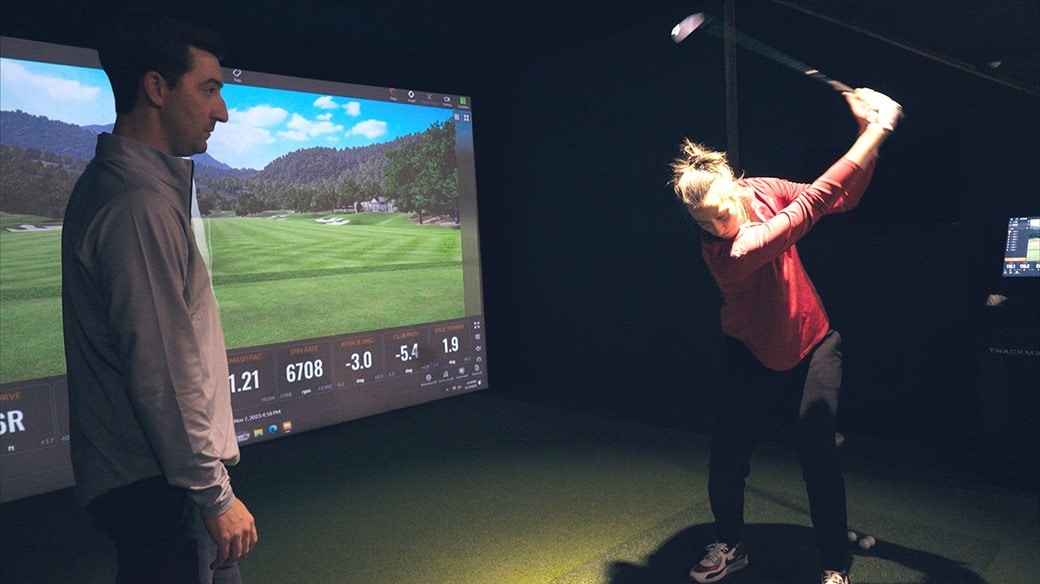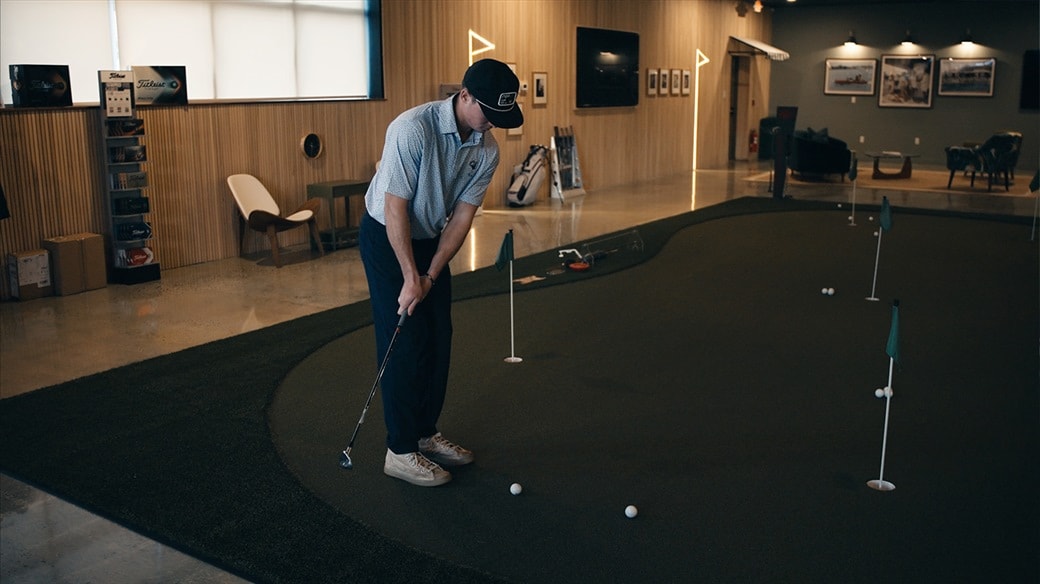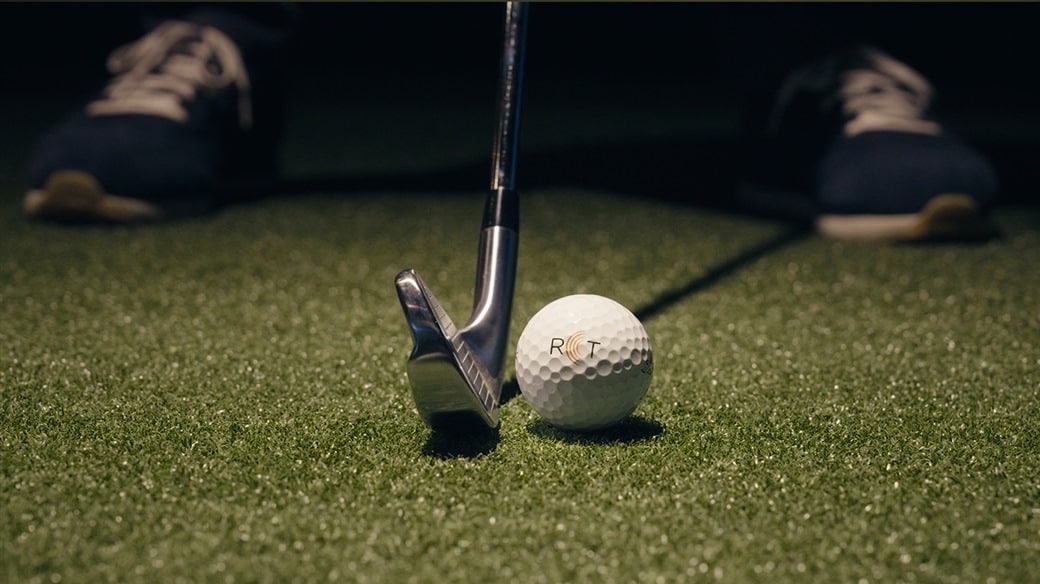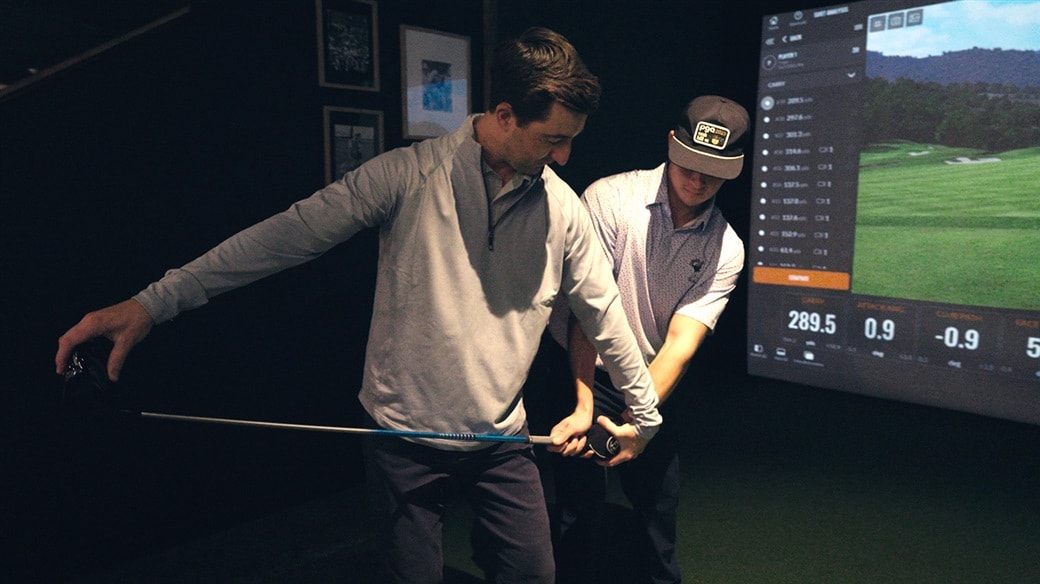Hey, Team Titleist!
Winter is just around the corner, but don't put your sticks away just yet!
We wanted to get some advice on keeping your golf games sharp this offseason so we recently spent a day with Rico Riciputi, A PGA Professional and Titleist staff member who owns and operates Coach Club, a state-of-the-art indoor golf performance center in North Hampton, New Hampshire.
In the video above, Rico talks about the benefits of working on your game indoors and he highlights three important areas of focus to keep you on-track as you look ahead to next season. Here are Rico's three keys for offseason training along with some practical ways to implement each into your practice regimen this winter.

1. Develop a Fundamentally Sound Swing
Striking the ball consistently, where you want it to go, requires a reliable, repeatable golf swing. To build a more efficient swing, Rico suggests starting at the moment of truth, Impact, and examining three critical variables that launch monitors like TrackMan capture on every indoor shot – angle of attack, swing path and clubface angle.
Angle of attack is the vertical direction of the club head as it moves through impact with the golf ball. On iron shots, angle of attack must be negative (descending through impact) in order to contact the ball with the sweet spot of the clubface. Rico told us that for a 7-iron, attack angle should fall between -2.5° and -4.5°. Many golfers struggle with this and mistakenly scoop upward in an attempt to get the ball airborne. This makes ball-first-then-turf contact very difficult, resulting in inconsistency.
"When you're hitting balls off the ground, it's very, very important to strike the ball first, ground after," Rico said. "It's not only going to help with distance, but it's also going to help put proper spin on the golf ball. When you are not hitting down on the ball enough, you can really struggle when the lie is less than perfect. So, if the ball is sitting down in the fairway or it's sitting down in the rough, you'll have a hard time hitting the ball solid and in the air."
With the driver, a positive angle of attack is usually beneficial, launching the ball higher off the tee and imparting less spin on the ball. This is the modern recipe for greater distance. Driver specs play a big role in this equation, of course, but many golfers hit down on tee shots, robbing themselves of easy distance by launching it too low and spinning the ball too aggressively to realize their full distance potential, given their swing speed with the driver.
Swing Path and Face Angle - On a center-face strike, when the clubface is perfectly square (perpendicular) to the swing path, the ball will fly straight. When the clubface is oriented slightly to the left or right of the swing path, the result is a slight draw or fade. As this gap between path and face widens, the curve of the ball increases, producing bigger hooks and slices. When you work indoors with a launch monitor and start understanding this relationship, you can then make adjustments to alter the ball flight. Being able to control your face/path conditions is how to gain control over the direction and curve on all your shots.
Everyone will have some variation in path from swing to swing. A positive number indicates an in-to-out path, meaning a right-handed golfer is swinging to the right of the target line. This path tends to promote a draw.
"The majority of golfers that we see produce negative path numbers" Rico said. “This means that they are swinging over the top or out-to-in. For 80% of golfers, I'd recommend trying to swing a little bit more in-to-out. It's not only going to help the direction of your shots, but it's also going to help with more consistent contact."
Whether you prefer a draw or fade shot shape, Rico added that a great goal is to keep your swing path within a three-degree range. Outside that range, your shot consistency will suffer greatly.

2. Implement Variable Training
There are two types of practice in golf – block and variable (or random practice). In block practice, the club, the lie and the target remain constant. Shots are repeatedly hit in the same way to ingrain a new motor pattern, position, feel or to develop a new shot or technical skill. Block practice is highly effective in making a swing change, but too many golfers rely on it exclusively. As Rico told us, in order for improvements to translate onto the golf course, you must devote at least equal time to variable training.
In variable practice, each shot is hit with a different club, with varying force and intention, to different targets. Variable practice mirrors the shot-to-shot variety we face during a round of golf.
Indoors, Rico recommends mixing shots up in a range setting (changing club selection, targets, shot height and curve with each shot) as well as playing frequent simulator rounds on different course layouts. Indoor centers like Coach Club also have many engaging tools like TrackMan Combine, an assessment that evaluates your shot-making skills and assigns you a handicap to track your progress.
Indoor league competition, par-3 and short game tournaments are also important, as they introduce a degree or pressure to practice. The more you can make practice feel like the on-course experience, the faster your improvements will start showing up where it matters – in the outdoor rounds that you play.

3. Dial in Your Equipment
Winter is the perfect time for equipment maintenance. Installing new grips and checking your lofts and lies are simple measures you can take to make sure your clubs are in good working order. But indoor technology allows you to do much more. Rico explained:
"If you're not seeing what you want in your ball flight, number one, let's check your mechanics to make sure you're swinging the club properly. But number two, we need to also look at your golf clubs and make sure that they're performing correctly, that you may have the right shafts, that you're optimizing distance with your driver, that you have the right wedge setup and that you have proper distance gaps throughout the set."
To get an accurate read on club performance, you need precise, measured shot data. With the introduction of Titleist RCT golf ball technology, launch monitors are now able to capture true, measured spin rate – essential in order to generate accurate depictions of full ball flight. Without RCT, radar-based launch monitors must frequently estimate spin rate, which results in approximations of trajectory, carry distance, curve, etc. With RCT, there's no guessing. Indoor shot data is every bit as accurate as shot data collected outdoors, which means you can trust that what you're seeing on the indoor simulator screen is what you'll experience on the course, too.
RCT has made it possible to now conduct indoor golf ball fittings. Rico had hosted two Titleist ball fitting events at Coach Club and told us that the golf ball is the best place to start when evaluating your golf equipment. RCT Pro V1, Pro V1x, Pro V1x Left Dash and AVX offer distinct differences in flight, spin and feel that can be seen clearly and instantly with comparison visualizations generated by the launch monitor software. Playing the right golf ball model for your game enhances every other improvement you make.
RCT has also accelerated the development of the Vokey Wedge Fitting App, allowing you to find the perfect wedge setup for your short game. What this all means is that, indoors, you are now able to fine-tune, and have confidence in, every piece of equipment in your bag. This is a great advantage heading into a new season.
One additional note – Rico pointed out that winter is also a great time to work on the engine of your game, your body. "Here at Coach Club, we have a TPI Golf Professional that brings our players through the TPI physical assessment. That really helps us identify where a player may be limited. Maybe it's hip mobility, maybe it's lack of flexibility, maybe it's strength or posture issues. But once we identify those issues, we can tailor a program that's going to help their body and their golf swing."
•••

Finally, for any offseason program, Rico was quick to note that it's important to work with a qualified instructor and to formulate clear goals and a gameplan for achieving them. Some things to keep in mind:
- Choose an instructor (online or in-person) that you trust and stick with that teacher's approach. Far too many golfers get sidetracked by trying the latest tip that pops up in their social feed or inbox. You have to be careful to only work on issues that are relevant to your game.
- Be honest in assessing your strengths and weaknesses. Spend most of your time on the parts of your game that are costing you strokes.
- You can't cut 10 strokes off your handicap overnight. Changing motor patterns takes a lot of time, so be patient with yourself.
- Be accountable. In golf, instruction will do you no good if you can't realistically put in the time your coach prescribes for training and practice. As Rico told us, "If you're going to go to the gym and you want to lose 10 pounds, you're not going in there for one week. You have to spend a decent amount of time in there, putting in the work, and putting in the reps."
- Track your results and progress. Regularly evaluate before/after video, launch data changes and skills performance tests like TrackMan Combine to make sure your efforts are paying off.
- Embrace the process. It's a long journey, so make it fun and make sure you enjoy the ride!
Thanks for your help, Rico!
We'd love to hear your ideas too. Join the conversation and let us know what you'll be doing to keep your golf game sharp this offseason.